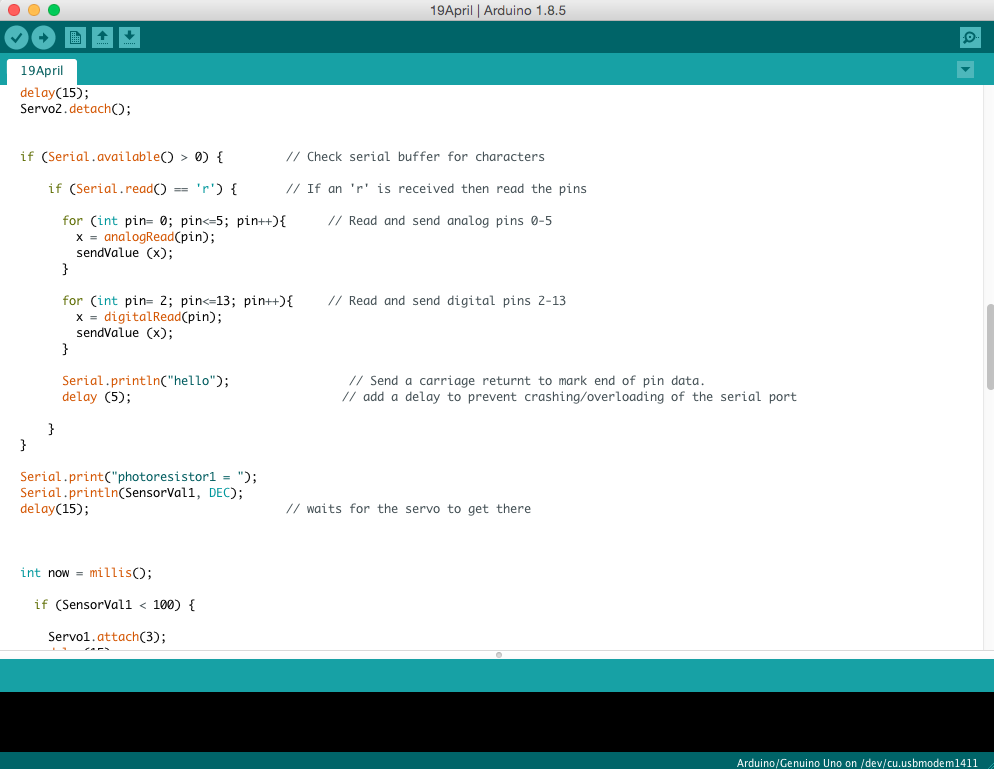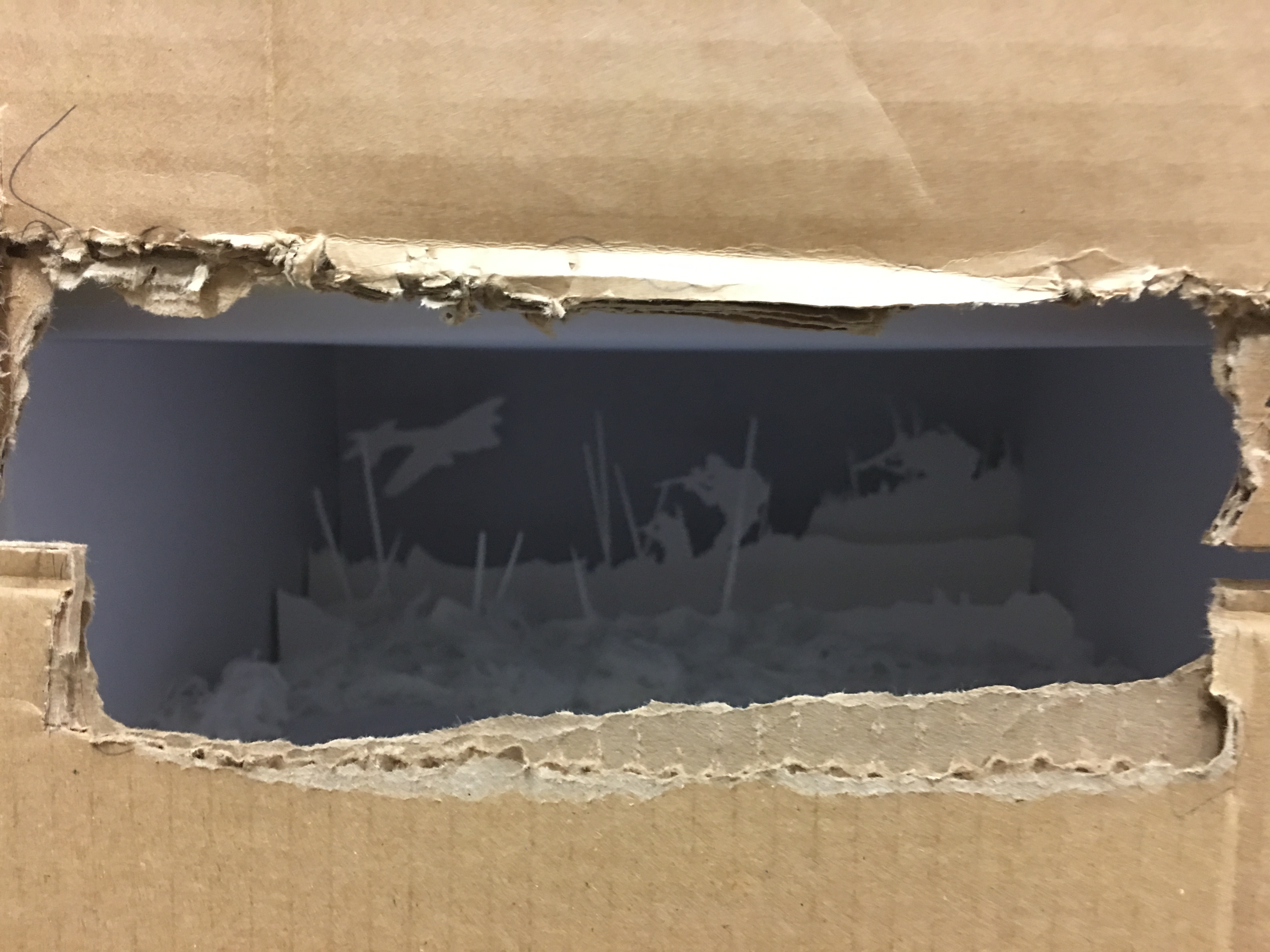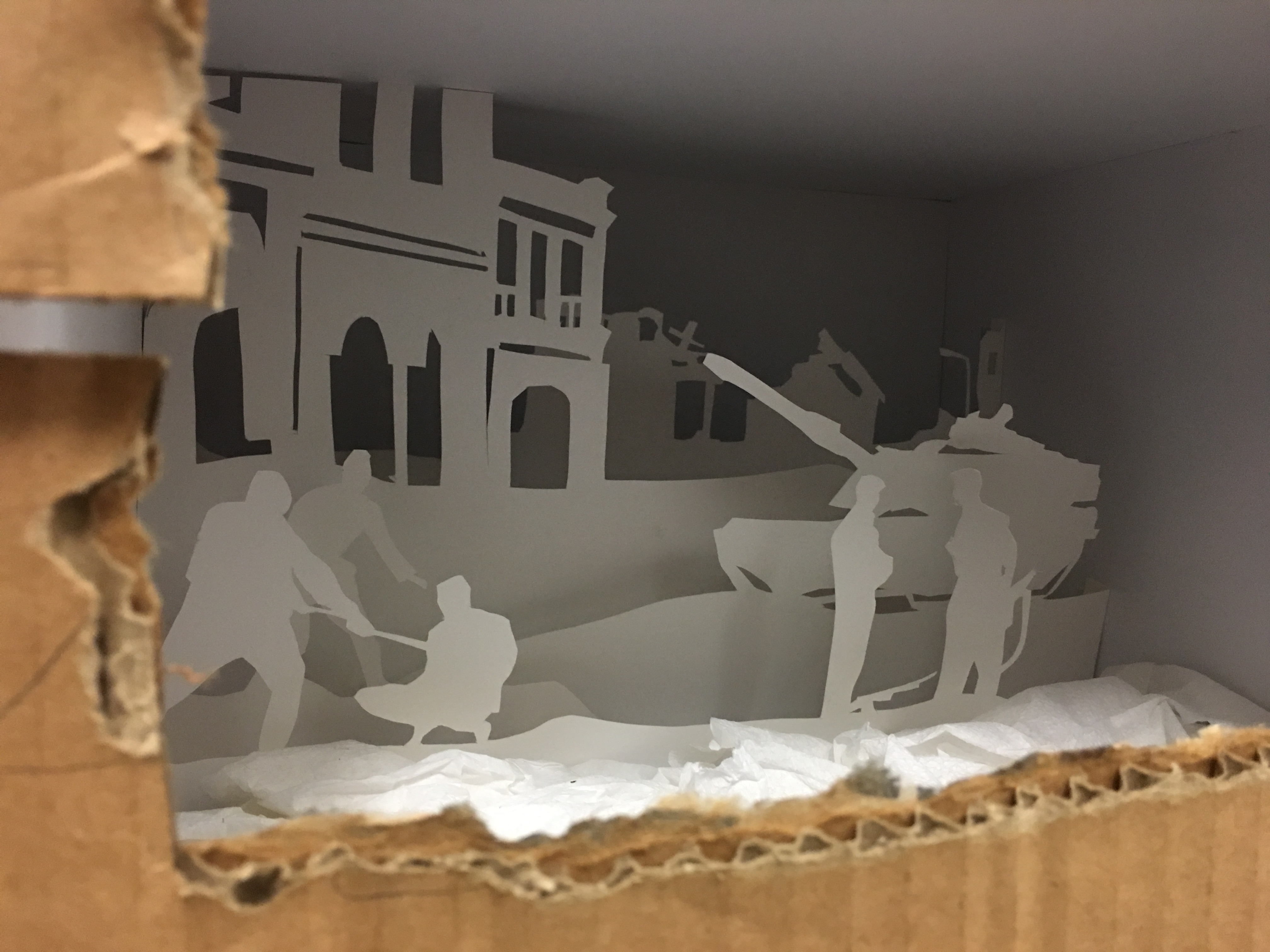WWII: Between the Cracks
by Putri Dina Andyana
Project Overview
WWII: Between the Cracks is an interactive installation which portrays the reality of the Fall of Singapore in 1942. By peeping into the cracks between the planks of the “wall”, audience are brought into a world where they illuminate scenes during the war and be enlightened by the hardships during this period.
User Interaction
A series of paper diorama are placed several cracks to symbolise the fragility of these memories. Just like the soldiers pointing their weapons, audience are encouraged to direct the torchlight onto the papercuts which in turn create shadows of these flashbacks. Audience are able to freely explore the cracks with some of them purposely installed almost close to the ground that the audience are forced to position themselves by crouching or kneeling to view inside.
Sensors are placed inside the windows so when light is shined onto it, the diorama comes to live as red lights are flashing accompanied by soundscapes of the war environment. Several motors are running as well to animate the papers out.
Process Documentation
Technical – DC Motors
Initially, I was planning to use DC motors to move the papercuts but after trying out the circuit, I realized that the propellor movement was too fast for the fragile papers to move. Also, I had difficulties trying to input the photoresistor values to output the DC motor so I decided to use 360 servo motors instead.
Technical – Servo Motors
This time, I managed to get values from the photoresistor and also added in some LED lights as my initial Arduino codes. The next step was to be able to create a communication with MAX to play the soundscape accordingly.
As I have a total of five boxes to light up LEDs in and each box has at least two LEDs and a photoresistor, I decided to split them into two sets of Arduino UNO (both due to the lack of digital pins and to easily edit the codes).




Technical – Arduino2Max
I found a good serial communication code from Arduino to MAX and decided to play around to see what responses I was able to get. Suprisingly, i was quite easy to use as I added in playlist~ along with a onebang function into MAX.
Soundscape
Next, I created the soundscapes using Adobe Audition by using both sounds from the WWII and from the ones I recorded.





Servo Motor
Since my dioramas are in horizontal layers, I had a hard time trying to figure out how to move the papers in that direction using a servo motor. Then, I decided to use a conveyor belt method. At first, I created it using hard paper and use a long rubber band to connect both wheels together but it was too flimsy and it was difficult to attach paper onto the single rubber band.
I moved on to using cardboards and instead of using a single rubber band, I wrapped multiple bands around the wheel to create friction. Then a long strip of fabric was connected.
One end of the wheel had the servo attached while the other did not so the friction automatically moved both wheels together.
Lastly, I attached loose pieces of paper cutouts onto the fabric strip so it would go into loops as shown below.

Construction
Finally, the planks were reattached onto the structure.
And of course, no matter how hard you tried to organize the wires, you just could not.






